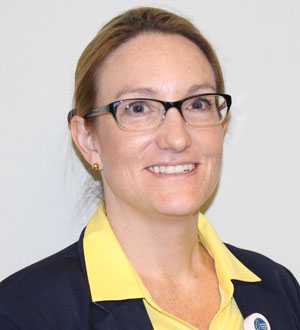If you’re in a hospital emergency room, the chances are good that you are having a bad day. Injuries and sudden illnesses have a way of ruining our plans and raising our anxieties. To make matters worse, many people experience long E.R. wait times, adding to their misery.
PeaceHealth Southwest is doing something about it.
This summer, PeaceHealth Southwest is piloting “Vertical Track,” a program aimed at getting people in and out of our E.R. faster. The early results are so promising that we anticipate a full rollout of the program later this year.
Vertical Track addresses the fact that roughly 40 percent of our emergency patients don’t need to get “horizontal” in a bed for their diagnosis and treatment. To better identify the specific level of care each patient requires, our triage nurse immediately evaluates E.R. patients on a scale of one-to-five to determine their acuity (severity of condition). Ones and twos are taken to rooms equipped with beds and full diagnostic and treatment capabilities, while some threes, fours and fives take the Vertical Track.
The Vertical Track patients are seen quickly by an E.R. nurse and provider, labs are drawn and EKGs performed, then the patient moves to a separate area where they rest in a comfortable chair as imaging is completed. As soon as the imaging results are back, the patient returns to the Vertical Track room to consult with the doctor. The next step is out the door for home.
In addition to effective triage, Vertical Track also speeds care through scrupulous efforts to identify unnecessary tasks and activities. As an example, Vertical Track patients are no longer expected to stand at the E.R. front counter reciting their name, address, phone number and insurance information. Instead, that registration information is gathered later in the process, during the lag time after the medical evaluation has been completed and the physician is awaiting test results.
Does the new process work? This recent case makes the answer very clear:
In July a patient came to us with knee pain. After two hours, the physician made first contact with her. After another 90 minutes, the visit was complete. Her total time in the E.R. was four hours.
The very next week, the patient’s knee pain returned, and she returned for care – this time during the pilot program for Vertical Track. To the patient’s delight, the doctor arrived to examine her within seven minutes. She was in and out of the E.R. and on her way in less than an hour.
It is important to note that Vertical Track does not slow care for our higher acuity patients – the ones, twos and some threes. Increased efficiency and shorter lines in the waiting room lead to better care for everyone.
The promising results of our pilot program have persuaded PeaceHealth Southwest to invest in a remodel of our emergency department. During the coming weeks, we will add two new exam rooms exclusively for our Vertical Track patients.
We’re excited to implement Vertical Track, which we expect will result in more rapid, effective emergency care for all our patients.
Angela Graves, BSN, RN, CEN, is a nurse manager at the PeaceHealth Southwest Emergency Department.


